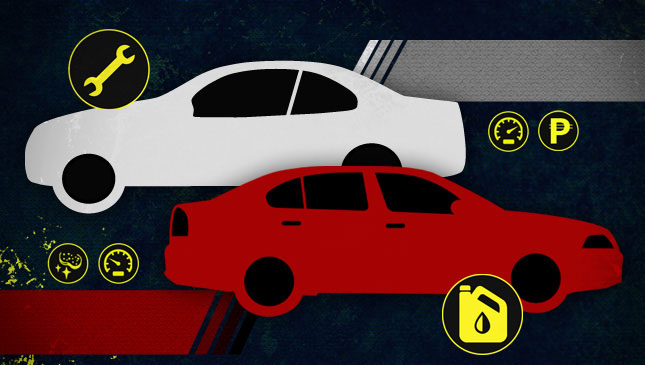
When it's time to pick up your car at the dealership, go over the car with a fine-tooth comb if you can. Point out and resolve any issues on the off chance that you find any before you take ownership of the car. You'll thank yourself later.
After your sales executive turns over the keys of your new car, here are some suggestions on what to do right after:
* Sit inside and take a few moments to be familiar with everything inside.
* Ask a few more questions about the vehicle's features that you may have forgotten to ask.
* Savor the new-car smell.
* Get comfortable in the driver's seat. Find your correct driving position, including all the mirrors, before you drive off.
* Once you're ready, gradually ease out of the driveway, taking note of where the corners of the car are at. Contrary to anecdotes, dings on your car are not the rite of passage of a real driver; it's also not the first thing you want on your newly purchased vehicle either.
There are two schools of thought when it comes to breaking in a new car. On one camp there's the drive-it-like-you-stole-it crowd, which favors savoring every ounce of performance that the car has to offer. Engine speeds in every gear are maximized, braking exercises would rival those done in local motorsports. A car is meant to be flogged, flogged hard, and to the limit in the eyes of this camp.
On the other side of the fence, some treat their brand-new cars gently, like a new-born baby. In many ways, a new automobile is a new-born and the baby of the owner. For these owners, nothing over 3,000rpm in any gear for the first 1,000km and thereafter for most of the life of the car. In fact, the engine in these cars will likely stay under 2,500rpm more often than not in an attempt to get the best fuel consumption.
I'm somewhere in between. I don't exactly take it easy on the car, but some time and kilometers are put in to get familiar with the limits of the car. Gradually breaking in the friction surfaces like the brakes and clutch for the first hundred kilometers or so also ensures that they don't glaze from excessive heat or abrupt engagement.
What's the point of having a capable car and engine if they aren't utilized? Naturally, following manufacturer's recommendations is best, but if there's one thing that I've observed while tuning cars is that you can tell how much the owners explore their car's capabilities. They'll be the ones that give the best numbers on the dyno.
Here's an interesting tidbit. Honda engineers claim that each engine they build have to be within 2hp of specification. Anything more get thrown in the reject pile. It's prudent to think that almost every other car manufacturer will be as stringent.
For a number of new cars, the first oil change no longer happens at 1,000km. Some happen at 10,000km as recommended by their makers. They also recommend oil changes happening more frequently when driven under harsher environments. Everyday stop-and-go traffic in today's urban commute would fall under "harsh," if not immensely terrible.
Changing at 5,000km will only help prolong the life of the engine, but perhaps not what's inside your wallet. Look at the bright side: Changing the oil is still significantly cheaper than changing an engine.
Taking care of the interior, on the other hand, isn't as complicated. For fabric interiors, spraying on a few coats of upholstery treatment like Scotchgard helps make the surfaces water-repellant. Prevent liquid spills from soaking into the underlying foam. No sugar-soaked foam means nothing to attract ants or roaches into your car. Spray the carpet while you're at it, too.
Leather interiors, on the other hand, require leather protectant and conditioner to keep them soft and supple. Keeping them clean with mild cleaners is the best way to prolong their life. Harsh chemicals will remove the moisture and damage leather quickly. Avoid them like the plague or parking idiots.
Every other interior surface? Keep them clean and free of residual body oil and sweat is more than enough. Bodily fluids make surfaces grungy; no one wants a grungy car. Oh, stop carrying ball point pens or other sharp objects in your back pocket. These sharp objects cause fabric and leather tears or ink stains that aren't cheap to fix.
As for the exterior, keeping the paint healthy these days seem to be much more complicated than in the past. Just look at the assortment of products available now. For new cars, the opposite could never be more true.
A few coats of wax within the first month of ownership will aid in keeping the shine for much longer. Regular reapplication of the protective sacrificial wax layer should be done once the water starts failing to bead up. Don't forget to always follow directions of the wax manufacturer and never wax your car out in the sun. It's the least desirable way of waxing your car. Once, you're done though, get cleaned up, go out for a drive and enjoy your new car!










